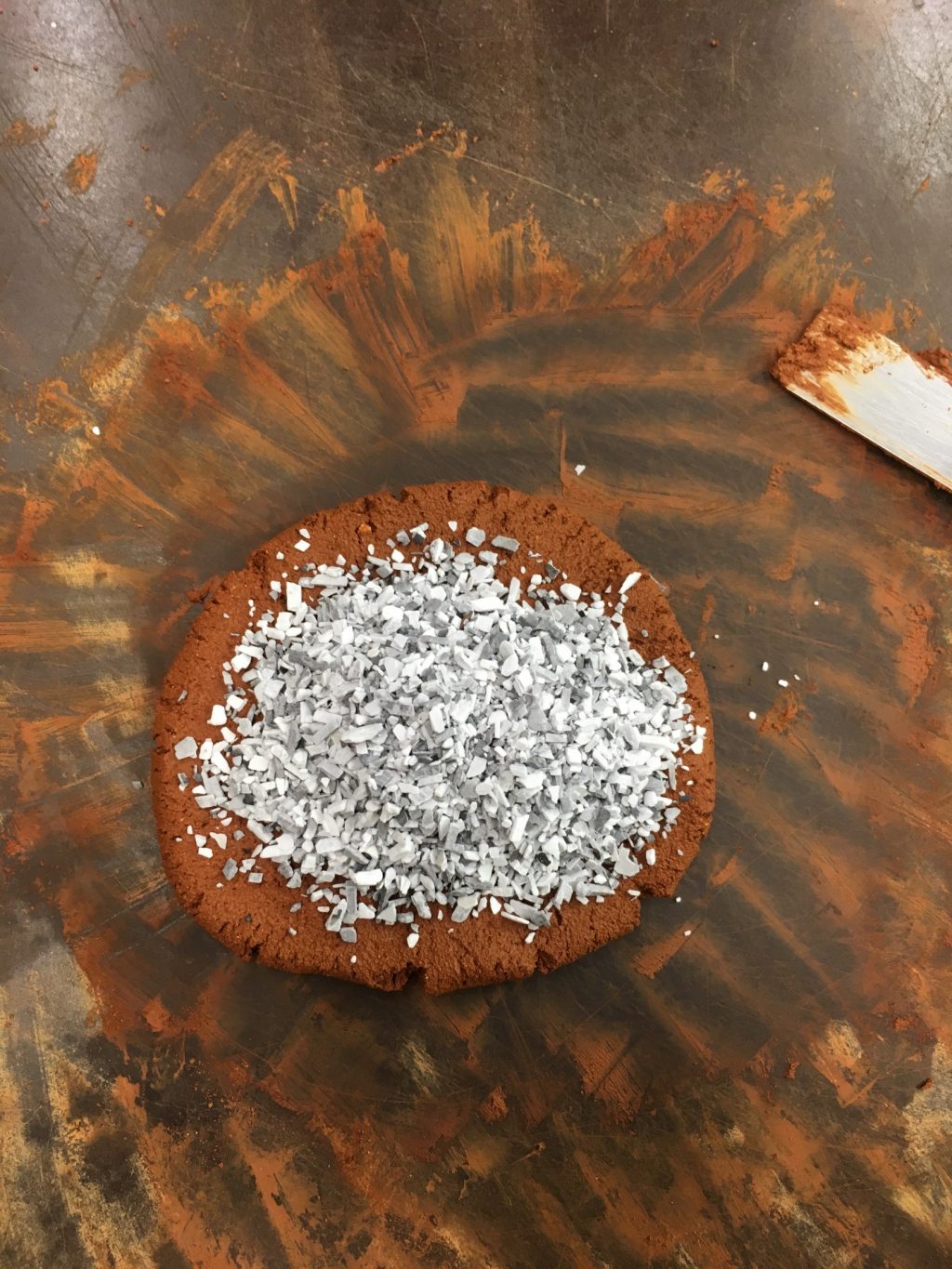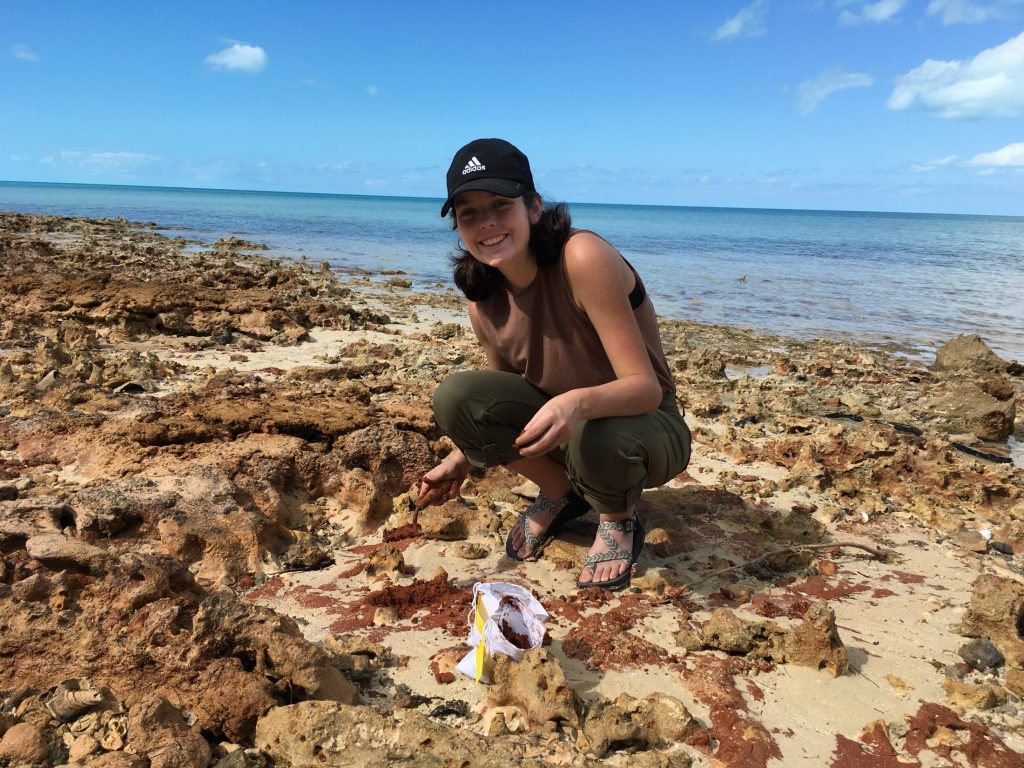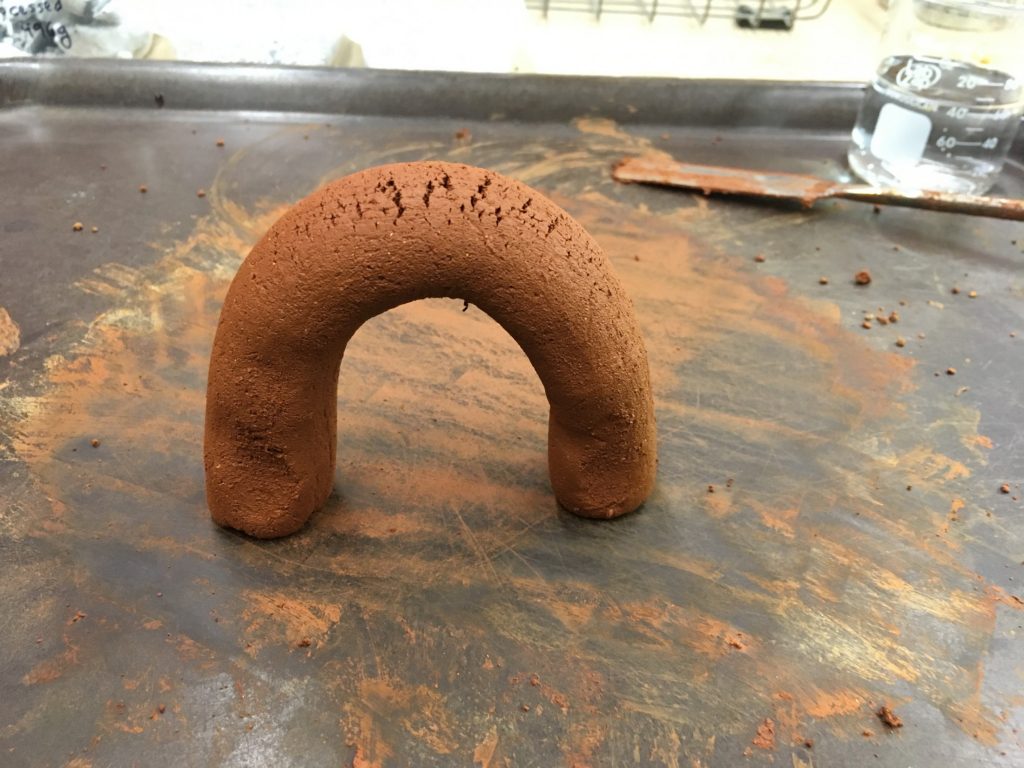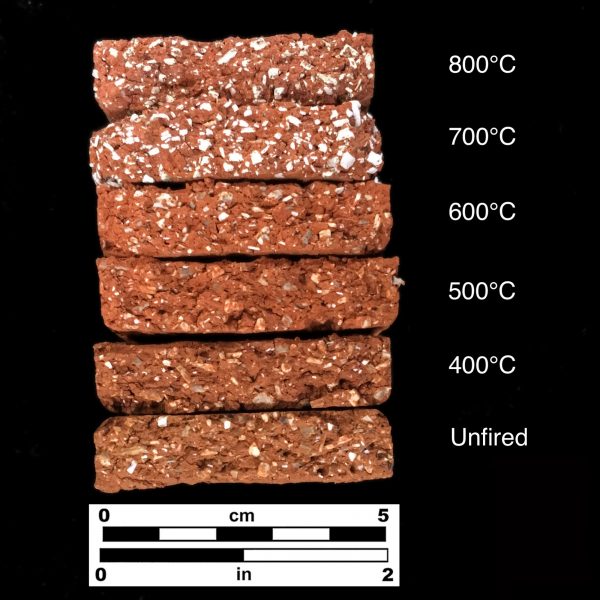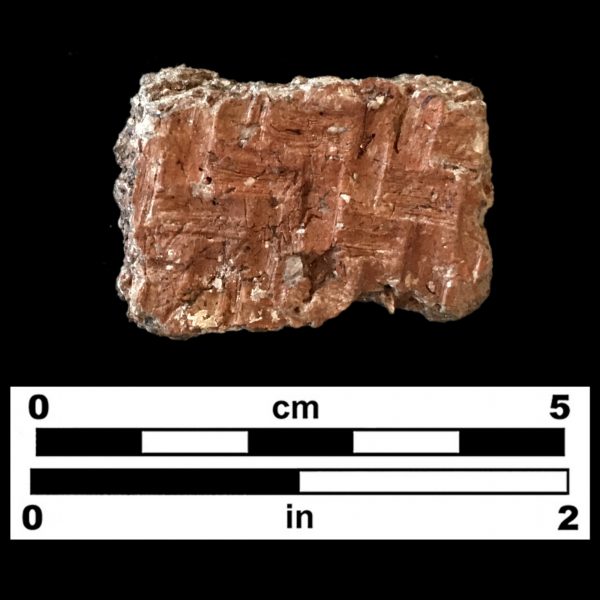In our last “Talking Taino” we described a variety of ways that meals were prepared without clay pots. The invention of pottery vessels led to widespread sharing of the technology and almost universal adoption. Pots provided a superior method of cooking with liquids. Two significant reasons for adopting pots are cooking corn porridge as weaning food (this has helped reduce infant mortality worldwide) and fermenting alcoholic beverages, such as manioc beer, chicha (corn) and pineapple wine (Carib).
Pottery has been made all over the world for thousands of years, independently invented in multiple places. At its most basic, the steps are: find clay, shape it, fire it. But within this basic recipe, people have developed innumerable variations to make successful pottery with different materials and for specific purposes. Although the process was by then well known, potters in the Lucayan Islands faced a number of technological challenges. So, how did the first people inhabiting the Turks & Caicos Islands figure out how to make pottery from scratch?
The first people to occupy the Lucayan Islands (the archipelago that includes the Turks and Caicos Islands and the Bahamas) arrived around AD 900. They likely came from Hispaniola, bringing their island life ways and goods they would need with them, including wood and stone tools, baskets, nets and pottery. Pots for cooking and serving food or storing water were common. When the pots they brought with them broke, or when they needed more, the hunt was on for suitable raw materials to make replacements. This task proved to be much harder than you may imagine.
Many Lucayan tools were made of natural materials that have decayed over time, so archaeologists rarely find them, but pottery from these early people is recovered today throughout the Turks & Caicos as broken sherds (fragments of pottery) washing out on beaches or buried underground.
The pottery that was made in the Lucayan Islands, a type we call Palmetto Ware, looks and feels very different from the typical Taíno pottery made in their homeland. While most Taíno pots are brown, thin-bodied and smooth, Palmetto Ware is red, thick and chunky with abundant fragments of burned conch shell. In our research in the Ceramic Technology Lab at the Florida Museum of Natural History, we set out to recover the recipe for island-made Palmetto Ware pottery, figuring out where the clay came from, what was added to it and how pots were constructed. This has included several expeditions to look for pottery raw materials. Trips we took to Great Abaco, Long Island and Providenciales allowed us to look for clay deposits in the same places the Lucayans would have found them hundreds of years ago. On Long Island, we drove out to sandy beaches along the coast. Exposed beds of limestone sat where the sand and water met, revealing small, eroded pockets of clay. We eventually stopped at a large expanse of beach, with exposed beachrock extending across it to the tree line. Walking across the limestone revealed bright red clay deposits in its pockets. Wait, red clay? How did iron-rich red clay end up on limestone islands?
Florida Museum photo by Lindsay Bloch
When you visit the Lucayan Islands today, most of the ground beneath your feet will be pale in color, whether coral and shell beach sand, rock outcrops or soil. The islands of this archipelago are comprised entirely of limestone built up over millennia from calcium-rich sea life, which is white in color, without the iron that turns soils rusty red.
The deposits of red clay found in the Lucayan Islands are Saharan dust that has made its way across the ocean! Fine particles of soil from the Sahara Desert form clouds that are transported all the way to the Americas, a process that has been happening for thousands of years. Even today, Sahara dust can be a nuisance affecting the flight paths of airplanes and air quality during weather events like windstorms. Over time, this dust accumulated in protected places, weathering to form a clayey material.
So what is clay? Defining clay depends on who you’re talking to. To a geologist, clay is defined by its very small particle size and the proportion of specific clay minerals. To a potter, clay can be anything that behaves like a clay. This usually means that it is plastic, or moldable enough to hold its shape for making vessels, and that it can survive the high temperature of the fire that renders it permanently hard. For the most part, the clay developed from Saharan dust is not clay from a geological standpoint.
Yet these patchy deposits are the only usable material for making pottery on these islands. Most other local materials won’t work, because limestone contains high levels of calcium, which makes pottery decompose when fired at high temperatures. But usable does not mean ideal. As we dug up these deposits, some much deeper than others, we evaluated their properties. We tried rolling the clay into balls, then forming a coil and finally arching the coil. Cracking or breaking at any step is an indication that the clay might not be plastic enough for pottery making. Almost all of our clay samples failed these tests. We don’t know what kind of tests the Lucayans may have done, but they likely began with some failures as well.
Much of the Caribbean was once home to active volcanoes, producing rocks that have weathered over time to produce plenty of good-quality clays. In many places there is also abundant quartz sand, which can be added to clays to provide strength. Additions such as this are called tempers, similar to adding aggregate to cement to keep it from cracking when it dries. Pottery-making was much easier in the Antilles. There is no quartz sand in the Lucayan Islands, only calcium-rich sand that would have made their pots collapse when fired. When calcium-rich sand and shell are heated in a fire, they can literally explode. Instead, the Lucayans figured out that by first burning and then crushing conch shell it would become more stable and rock-like when refired in the clay to a moderate temperature. Conch shell temper made all the difference, helping the stiff clay to hold its shape and form pottery vessels. These shells were selected due to their abundance and because the thick shells produce the larger fragments needed to mix with the clay; thinner shells turn to powder when heated. Researchers today understand that adding the shell prevents cracking and thermal shock in fired pottery, something the Lucayans clearly figured out long ago.
The Lucayans were not simply explorers and settlers of these new lands, but engineers and innovators too. They likely tested different tempers, clays and firing temperatures until they successfully created Palmetto Ware. In the lab, we’ve been working on replication experiments to determine what conditions produce the best pottery with the available materials. We brought back clay samples, burned a conch shell in a fire and then crushed it to include in the ceramic recipe as a temper. We then formed the clay into briquettes with various ratios of shell temper, mixed with salt or fresh water, and fired to temperatures ranging from 400-800 degrees C.
We compared the briquettes to archaeological Palmetto Ware and evaluated their hardness and color. While some briquettes fired firm, others fell apart quickly or soon after cooling, especially those fired at higher temperatures. This told us that Palmetto Ware must have been fired at lower temperatures, likely in the same range as fires used for cooking. Even so, Palmetto Ware tends to be thicker and softer than traditional Taíno pottery, crumbling fairly easily, especially over time. The islands’ warm, moist environment makes for poor preservation, and other factors like coastal erosion, sea level change and weathering events make it difficult to find intact artifacts or sites. In fact, a whole Palmetto Ware pot has never been recovered. What remains of pots in the Lucayan Islands are often small sherds.
Nevertheless, we have some evidence that the Lucayans made Palmetto Ware in some of the same shapes and with the same decorations as the pottery brought from Hispaniola. These decorations include incised parallel lines, cross-hatching, appliqué, poked marks called punctations, folded rims and animal representations called adornos. Most Palmetto Ware sherds are plain and undecorated, but this is due to their small size and the limited placement of designs near the top of the pot. These rough surfaces provide for a firmer grip when moving the pot, while clay extending from the vessel provides a cooler surface for lifting vessels from a fire.
Sometimes we also find where clay was pressed out onto woven mats, leaving a basket-like impression. These mat impressions are also sometimes found on bowls, where it looks as if the lower portion of the pot was shaped in a basket. More often, these impressions are found on even thicker, flat fragments of pottery griddles. Griddles were used for baking cassava bread and other types of food processing. In addition to acting as a signature for the person who made the mat and the griddle, the dimpled bottom increased the surface area and enhanced thermal conductivity.
Palmetto Ware has long been considered simpler or “inferior” to Taíno pottery due to its fragility and apparent lack of decoration. This idea is belied by the fact that modern archaeologists have struggled to experimentally recreate Palmetto Ware. Rather than prove its simplicity, these tests have shown the skill and expertise of the Lucayans in their craft.
In the lab, we have now moved on to figuring out more specifically where pottery was made, based on its elemental “fingerprint.” By identifying the specific composition of a potsherd, we can link it to a particular island where we’ve found clay with the same fingerprint. For example, we can tell the difference between pottery made on Middle Caicos from pottery made on Long Island (the Bahamas) by the specific ratios of elements such as zirconium and rubidium. We have also learned where the Taíno pottery found in the Turks and Caicos Islands was made, with much of it coming from the northwest coast of what is now Haiti.
Compositional analysis allows us to determine what the Lucayans and Taínos cannot tell us themselves — how they moved and traded hundreds of years ago. This includes what routes they may have taken and just how far of an influence they may have had. Peoples from Cuba and Hispaniola traveled to what is now the Turks and Caicos Islands, but also hundreds of miles to the most northern parts of the Lucayan Islands. Not only are we able to retrace their steps, but also see how they adapted their technology to new conditions and materials. Understanding Caribbean ceramics is as much of an exploration for us as it was for the Lucayans first figuring it out.
Emily Kracht is a collections assistant and Lindsay Bloch is collections manager of the Ceramic Technology Laboratory at the Florida Museum of Natural History.
Editor’s note: This article first appeared in “Times of the Islands.”
Writers: Emily Kracht, ekracht@ufl.edu;
Lindsay Bloch, lbloch@floridamuseum.ufl.edu
